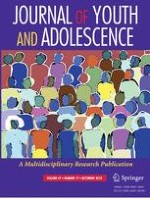10-07-2018 | Empirical Research
Individual and Sibling Characteristics: Parental Differential Treatment and Adolescent Externalizing Behaviors
Gepubliceerd in: Journal of Youth and Adolescence | Uitgave 12/2018
Log in om toegang te krijgenAbstract
Adolescents’ reports of parental differential treatment have been linked to increased externalizing behaviors. The current study investigated whether adolescent self-esteem and sibling relationship characteristics (age-spacing and sibling relationship quality) moderated associations between parental differential treatment and later externalizing behavior. Data was gathered at two assessments from 708 sibling pairs (94% White; 51% male; same-gender pairs <4 years apart in age). Older/younger siblings were aged MAssessment1 = 13.5/12.1 and MAssessment2 = 16.2/14.7 years. We found that higher levels of maternal differential treatment predicted greater residualized gains in externalizing behavior among older siblings who were (a) the same age as their sibling or near-to and had low self-esteem or (b) three years older than their sibling and had higher self-esteem. Higher levels of paternal differential treatment predicted greater residual gains in externalizing for older siblings with wider age ranges (regardless of self-esteem), and among older siblings with high levels of self-esteem (regardless of age difference). Surprisingly, maternal differential treatment was protective in one case: for adolescents with low self-esteem who were at least three years older than their siblings, maternal differential treatment predicted reduced externalizing behaviors. Paternal differential treatment was protective for more youth than maternal differential treatment: older siblings with low self-esteem who experienced paternal differential treatment exhibited decreased externalizing behaviors across adolescence, regardless of age difference. The findings highlight the importance of self-esteem and sibling age-spacing as particularly salient contextual influences in older siblings’ perceptions of maternal and paternal differential treatment, and that maternal and especially paternal differential treatment does not always serve as a risk factor for externalizing problems.
